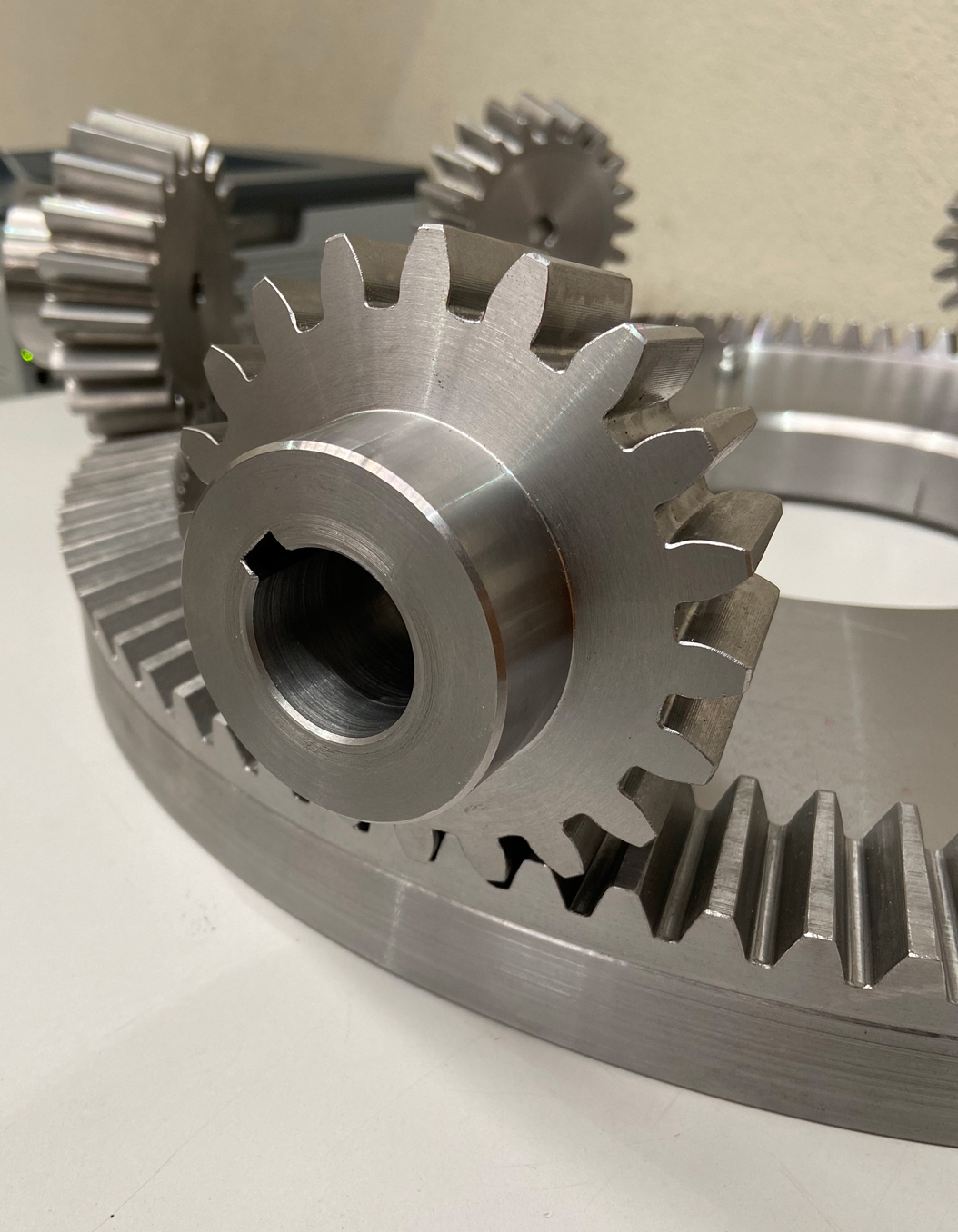Tempering is a heat treatment that is carried out on steel after hardening to achieve…

What types of gears are there and what are their applications?
There are many types of gears used in industry for different purposes and needs. Learn more about what they are and their applications.
What types of gears are there and what are their applications?
What types of gears are there and what are their applications?
The main types of gears
Gears are mechanisms that transmit mechanical power from one component to another and are made up of two toothed wheels that are set in motion if a torque is transmitted. Geared devices can change torque, speed and direction of the power source.
There are five basic types of gears classified according to their design: spur, helical, bevel, screw and hypoid. Shaft orientation, efficiency, speed and torque determine which type should be used for which application.
Spur gears
Due to their simplicity, they are the most common gears and have a straight cut. They consist of a cylinder or disc and their teeth project radially and are mounted on shafts parallel to the axis of rotation. They are used in moderate speed applications, such as mill drives, lifting equipment and in general machinery due to their low cost, low maintenance and lack of final thrust.
Some of their advantages are their simple design and manufacture, the large amount of power they are capable of transmitting, the constant and stable speed ratio they can offer, higher efficiency compared to other types of gears of the same size and that they do not produce axial thrust.
Helical gears
The teeth of this type of gear are oriented at angles of up to 45°. They differ from spur gears in the oblique way in which their teeth interact in relation to the axis of rotation, which may be parallel or cross, generally at 90º. If the shaft is crossed, helical gears are used in conjunction with a worm gear.
Helical gears can be single and double helical gears, the latter being used for applications requiring high speed and ratio in a single stage. Double helical gears, in addition, have two sets of teeth in one gear with opposite tooth angles separated by a spline and are much more resistant to shock and vibration.
Compared to spur gears, helical gears are capable of carrying more load, are quieter, have less vibration and operate at higher speeds. In addition, helical gears produce thrust loads.
All these features make helical gears perfect for mining, paper mills, extruders, in port cranes and in casting.
Screw gear
This consists of a worm gear system that has a helical gearing meshing with a toothed wheel, known as a pinion or worm wheel, which transmits motion between mutually perpendicular shafts. Each time the worm turns a complete revolution, the gear turns one tooth,
which means that the mechanism is capable of providing large speed reductions.
This type of gear is used to transmit force and motion between two shafts that are perpendicular to each other, it is a perfect irreversible mechanism to eliminate any possibility of the wheel’s movements being transmitted to the screw and the speed reducers do not take up much space making them easy to implement in many industrial systems.
Worm gears are used as speed reducers in small motors, in automatic door systems, in musical instruments, in clamping mechanisms, elevators…
Bevel gears
Bevel gears use two angular or conical shaped gears that have a pressure angle of 20 degrees and allow motion to be transmitted between perpendicular shafts or for shafts with an angle other than 90º. In addition, they produce thrust loads between the two shafts.
There are three types of bevel gears:
- Spur bevel gears, which, have straight teeth.
- Spiral bevel gears with curved teeth.
- Oblique-toothed bevel gears, with straight teeth but at an angle to the centre line of the shaft.
Bevel gears are used in mining, aerospace, robotics or food processing.
Hypoid gearing
This type of gear is widely used in industrial machinery. Although they are very similar to spiral bevel gears, they differ from them in that the centre lines of their shaft are not crossed. The helical teeth of this gear produce less noise and are stronger than a spiral bevel gear.
Gear machining, the key to industry
Nowadays, almost all machines involved in industrial processes use gears, so their use is essential in practically all industrial sectors.
Gear machining is known as the set of industrial processes that manufacture and shape gears from raw materials. These operations are carried out to obtain the desired shape and characteristics in specific materials that will be used in a wide range of industrial fields.
Gear machining experts
EONSI specialises in gear machining. Your projects are important to us, so we offer advice to plan the gear machining that best suits your needs from our manufacturing and assembly service.



